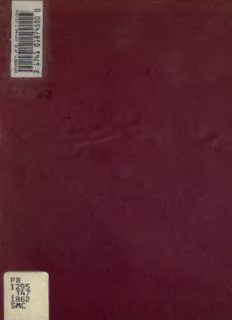
Three Irish glossaries : Cormac's glossary, codex A PDF
Preview Three Irish glossaries : Cormac's glossary, codex A
the pResence ofthis Book in the].m. kelly LiBRARy has Been nuóe possiBle thRouqh the qeneRosity of Roman Stephen B. From the Library of Daniel Binchy TIIREE IEISH GLOSSABIES. CORMAC'S GLOSSARY OODEX A. (FROM A MANUSCRIPT IN THE LIBRARY OF THE ROYAL IRISH ACADEMY), O'DAVOREN'S GL0SSARY (FROM A MANUSCRIPT IN THE LIBRARY OF THE BRITI8II MUSEUM), AND A GL0SSARY TO THE CALENDAR OF OTNGUS THE CULDEE (FROM A MANUSCRIPT IN THE LIBRARY OF TRINITY COLLEGE, DUBLIN). WITH A PREFACE AND INDEX BY w. s. WILLIAM8 ANI) NORGATE. 14, HENRIETTA STREET, COVENT GARDEN, LOKDON; AND 20, south fredp:rick street, EDINBUIM.H. 1862. TO GEORGE PETHIE LL D. AHCILEOUMiIST, PAIN^ER, MUSICIAN, MAN OP LBTTBR3. AS SUCH, AND FOR HIMSELF, REVEREI) AND LOVED. a úr ^MJ "^.^ W p r e f a (: i : The present volumc contains three Irish glossaries. which are now printed íbr the íirst time. I purpose in this preface to describe the manuscripts from which they have been taken respectively, and to point out their value as contribu- tions to Celtic philology, mythology and history. The first and most important of these glossaries is the so-called Sanas Cormaic*. The manuscript from which our text has been taken presents the oldest complete copy known to exist. It is preserved in the library of the Royal Irish Academy, marked II. and S. [Hodges and Smith] No. '224. S. 3/67. I call it Codex A. and the following is a descrip- tion of it. The codex is vellum, in large folio, and dates, I should say, from about the early part of the fifteenth century. There are eleven leaves, which are discoloured in some places: the margins are broken, and the left-hand lower corners of folios 5 and 6 have been cut away. The *) Sanas (of which a diminutive sanasán is found) may hetfe mean érther a glossary or an etymologicon. I am inelined to derive it from sov n.lx. vo.iibiilum Z. 969), with the regressive assimilation found in m«- nac/i (moBrneatc.huhsa)nea:nd"heit>hiei».ir/ya;/"as(d(pe^OtLyimoo\looygíoiLa),.SACNoAm?pa)reChoorwmeavce'rs tdheeriWvealtsifoan />- (infra p. 10.) ^ran' knowledge" is unworthv of attention. VI PIIEFACE. scribe's name does not appear, but in the upper margin of p. 8 we find Ac so indara line donnu- Here is the second line of rachadh aceneW fechin .i. in- the renewing in Cenél Fechin legtoir ofathaig itus. ocus i. e. the Reader 0'Fahy at seaan iraibne iarsin. first, and John O'Raibne after- wards. I Hence it appears that the manuscript was retouched in that ancient district, in the County of Galway, of which, as Mr. Curry's catalogue informs me, the O'Fahvs were chieftains. The handwriting closely resembles that of the latter part of the socalled Leabhar Breacc ("Speclded Book"). Mr. Curry, indeed, thinks that our codex originally formed part of that manuscript. I am inclined to agree with him, especially as the scribe's perverse ingenuity in disfiguring Latin words* can only be paralleled by the efforts in the same direction of the writer of the Speckled Book. The Sanas Cormaic begins at page 1 of our codex, and ends in the second column of page 10. It is followed by a life of St. Cellach, commencing Rig rogab forcondachtu .i. A king was over the Con- eogan bel mac cellaig maic naughtmen, to wit, Eogan Bél, oillelJa muilt. son of Cellach, son of Ailill Molt. — ( p. 15, col. 1. Incipit coisecrad eclaisi indso a tract on the consecration of a church. p. 16, col. 1. a tract beginning Pais cristifirinchonchinn.vii. The passion of Christopher kl. mai aungreim mor forsna- the dog-head, the 7th of the cmíaidib inaimser déich in- kalends of May: a great per- himper Rogabadh dana infer secution of the Christians in noem cristoforus annsin coro- the time of Decius the empe- pianad cwmmu caich. ror. Now the holy man Chri- stopherus was taken and pu- nished like every one [else]. * Inthepresent edition the spelling oftheLatin hasgenerallyheensetright.
Description: